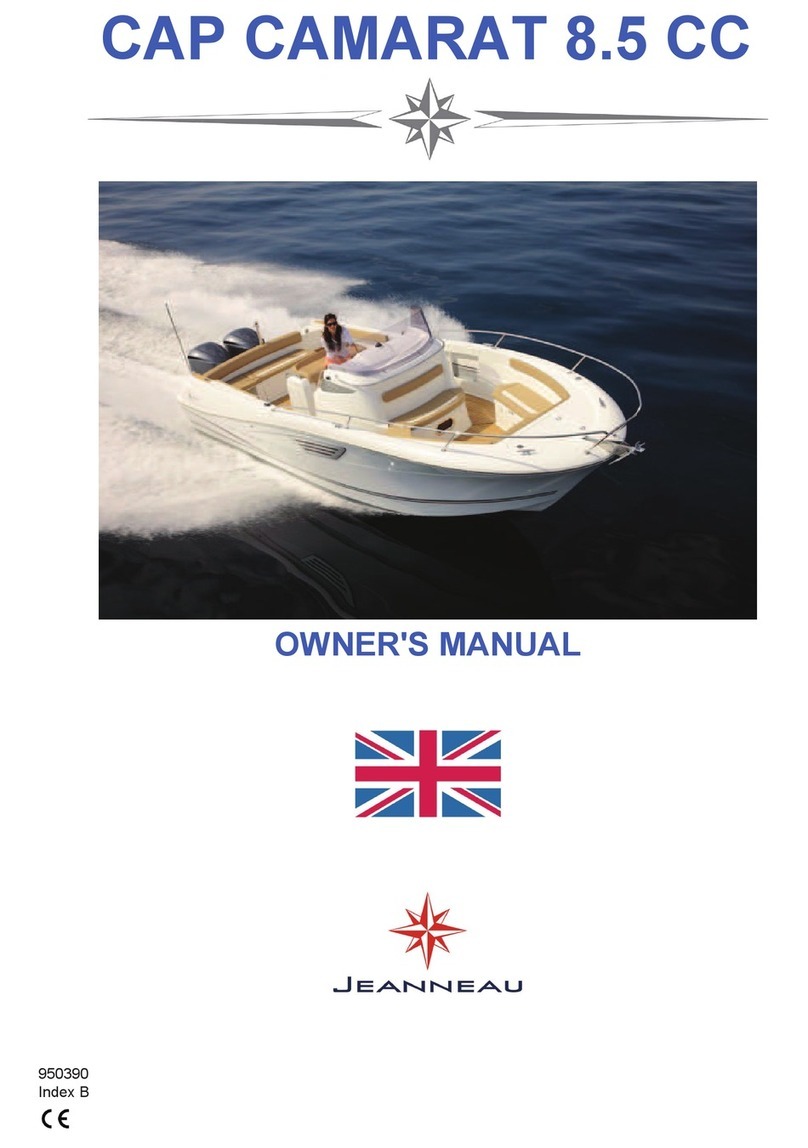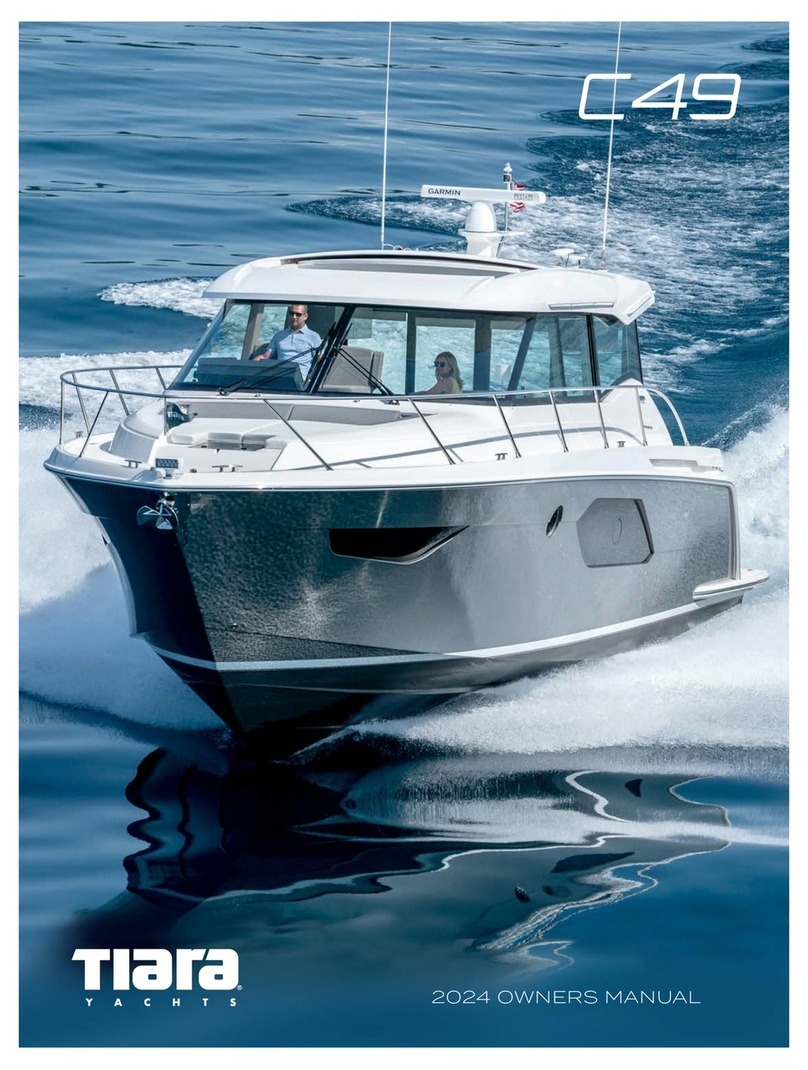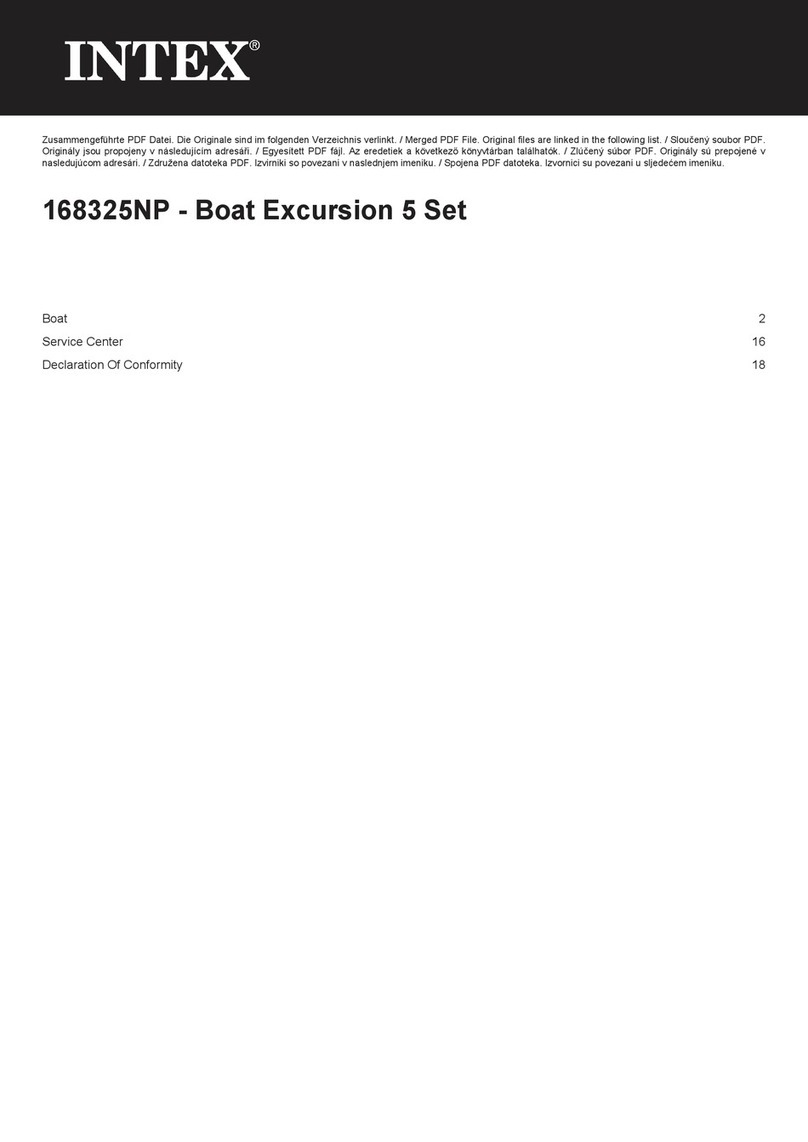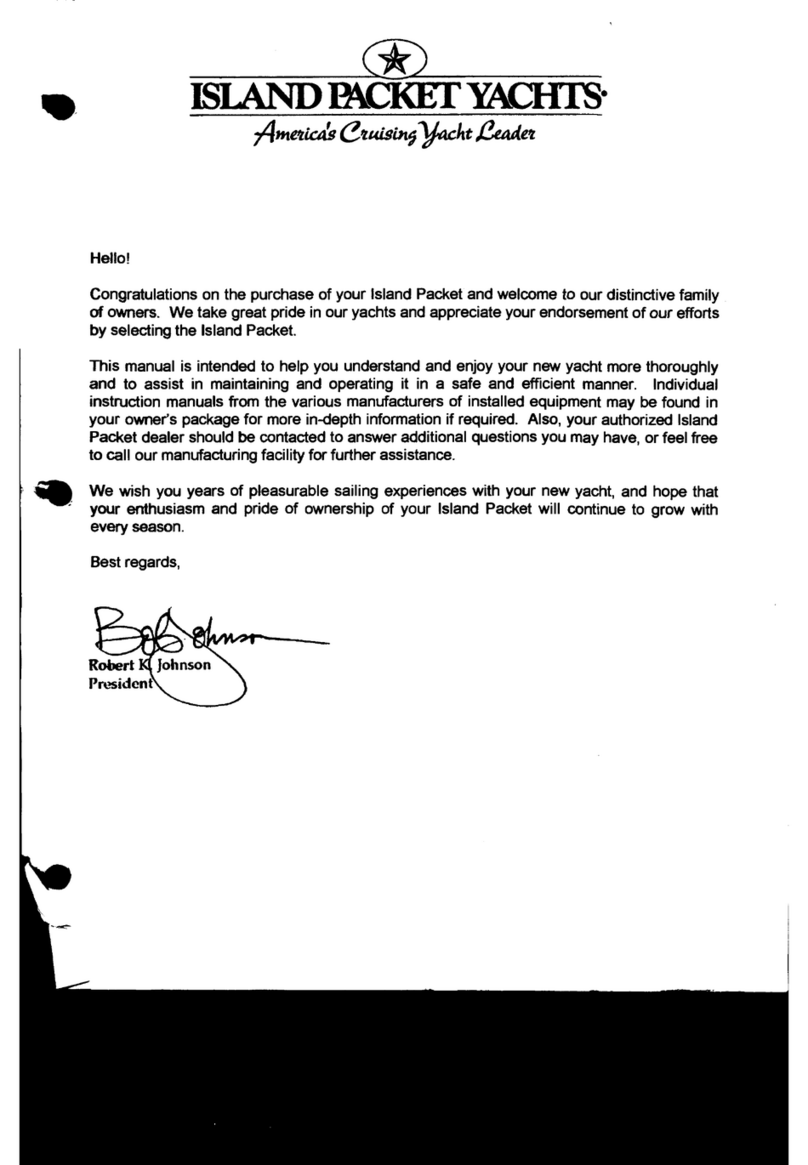needed.
Shackles,snapshackles,sheettrackandwinches
havetobeadjustedandoiledtofunctionsmoothlyandfast.
Tuning,
ina widersense,meansmarryingsailstosparsand
riggingandgettingeverything,includingthecrewtofunction
fastandwithprecision.
VEGAiswellbalancedandhasjusttherightfeelonthe
helmwhensailedwiththecorrectsails.A slighttendency
to
luff,
andthusa pressureonthehelm,isdesirableina
boatwitha conventionalkeelandrudderinordertogetthe
boattogowelltowindward.Whenthebreezefreshens,the
pressureontherudderincreases.Tokeepthepressurelow,
thefirstlargereductioninsailareaisbestmadebyreefing
themainsail.Anotherreasonisthattheheadsailsaremore
efficiëntthanthemainsailsizeforsize.Justlikeotherboats,
VEGAcanbecomeveryhardonthehelmundercertaincon-
ditions.Whenbroadreachingwiththespinnakerpoleagainst
theforestayina 16to20knot
wind,
considerableeffortmay
beneededtokeeptheboatoncourse— butthenshetravels
atover10knotsforperiods,wellabovehertheoretical
maximumspeed.Ifthewindincreases,thespinnakerhasto
bechangedfora genoajibandtheboatwillagainbevery
easytohandle.Whenrunning,thespinnakercanpossibly
beusedinupto30knotsofwind— givinga sensationally
fastrun.
VEGAcanbesailedundereithermainsailorjibalone.Under
jibsheismoreeasilymanoeuvredthanundermainsailonly.
Withjibno.3 (area5,4
m2/58
sqft)shehasbeensailedto
windwardinheavyseasanda 38knot
wind.
Itwaspossible
totackiftherightmomentwaschosen.Later,underthe
sameconditions,VEGAbroadreachedforseveralhoursata
meanspeedof4 knots.Certainlyveryfastfora boatofher
sizewitha sailareaofonly58sqft.Thisillustrateshow
easilysheisdriven.
Thefollowinginformationregardinga suitablesailchange
scheduleappliestooffsh3 racingwiththeboatandcrew
ingoodtrimandnounnecessaryweightonboard.TheSched-
ulecanalsobea guideforthefamilycruisingmanwho
shouldshortensaila littleearlierthantheracingmanto
makesailingmorecomfortable.Theinformationrefersto
sailingtowindwardwhentheangleofheelshouldbeless
than20°to25°.
Wind
m/s knots
Beau-
fort Sails
0—5 0—10 0—3 Mainsail+ lightgenoajib
5—8 10—16 4, -+Standardgenoajib
8—11 16—22 5 Reefed» -(-Standardgenoajib
11—14 22—28 6' Morereefed -t-smallgenoaorjib
no.
1
14—17 28—34 7 Morereefed +jibno.2
17—20 34—40 8 Bottomreefed» -f-jibno.2
20—24 40—47 9 Bottomreefed» -f-jibno.3
24—
47—
10—
Bottomreefed» orjibno.3
Whenracingitisimportanttokeeptheboatlight.Theamount
offoodandstores(waterandfuel)hastobeconsideredand
maybepartofthecruisingequipmentcanbeleftashore.
Sailhandling
Itisbesttopracticesetting,changingandtakingdownsails
inlightconditions.Oncetheprocedureisknownandafter
somepractice,sailchangescaneasilybeeffectedinstrong
winds,largeseas,rainanddarkness.Therearemanyways
inwhichsailscanbeworkedandhandledanditisbestto
determinewhichwayisbestsuitedtooneselfandthecrew.
Thefollowingarebriefsuggestionsondifferentmethods:
Changingofheadsails
Theforedeckhanddoeseverythingexceptsheetingthesail
home,
whichshouldbedonebythecrewmaninthecockpit
orbythehelmsman.
1.
Thetackofthenewsailisattachedtothestemhead—
atleasttwohooksshouldbefixedonthestemhead
fitting.
2.
Thelowersailhanksoftheoldsailshouldbetakenoff
theforestay.
3.Thenewsailishankedonandpulledoutalongthelee
rail.
4.
A newsheetisattached— thismeanshavingtwosets
ofsheetsandsheetleads.
5.Theoldsailistakendownandunhanked.
6.Thehalyardistransferedtothenewsail— andalsothe
sheets,iftwosetsarenotavailable.
7.Thenewsailishoistedandsheetedin.
8.Thetackoftheoldsailisunhookedandthesailtaken
below.
Reefingthemainsail
Thesailisbestreefedwhenhoisted,alsowhentheboatis
atanchorormooredtoa buoy.
Toreefwhensailing,thehelmsmanshouldsteera course
somewhathigherthanclosehauledandeasethesaila little.
Allactioniscarriedoutbytheforedeckhand.
1.
Tightenthetoppinglift.
2.
Takeoutthereefinghandle.
3.Releasetheslidestoponthemasttrackandeasethe
downhaul.
4.
Easethemainhalyardtwofeet.
5.Rollthesailup,ensuringthattheluffropeandslideslie
wellbackalongtheboom,clearofthehandleandgears.
6.Ifmorereductioninsailareaisrequired,easethemain
halyardagainandcontinuerolling.
7.Thesailshouldberolledsothattheboomliesabovethe
leveloftheblackbandonthemastanddoesnotdroop
toomuch.Theslidesshouldberemovedfromthelower
partofthemasttrackasanyleftinwillpullthesailout
ofshape.
8.Tightenthedownhaul,easethetoppinglift,andsheetin
the
sail.
Whenrollingitmaybenecessarytopullthesailout
alongtheboomtoensurethatitstowsneatly.When
takingina largereef,itmaybenecessarytoremovethe
bottombattenifitdoesnotlieparalleltotheboom.The
reefcanbeimproved,theboompreventedfromdrooping
andthesailpreventedfromwrinklingifsomeformof
paddingiswrappedinthesailfromthemiddletothe
endoftheboom.A sailbag,a pilloworsomespare
battensaresuitable.
Sailingwiththespinnaker
TheStandardVEGAmustbeequippedwiththefollowing
extrastotakea spinnaker:Spinnaker,spinnakerboom,boom
toppingliftwithanextrablockonthemast,foreguy(down-
haul)witha blockontheforedeckorbythemast,halyard
witha blockatthetopofthemastabovetheforestay,two
sheets,twosheetblocks.YourVEGAalreadyhasmasttrack
witha travellerforthespinnakerboomandfittingsforblocks
atthestern.(SeeFigure11).
8



























